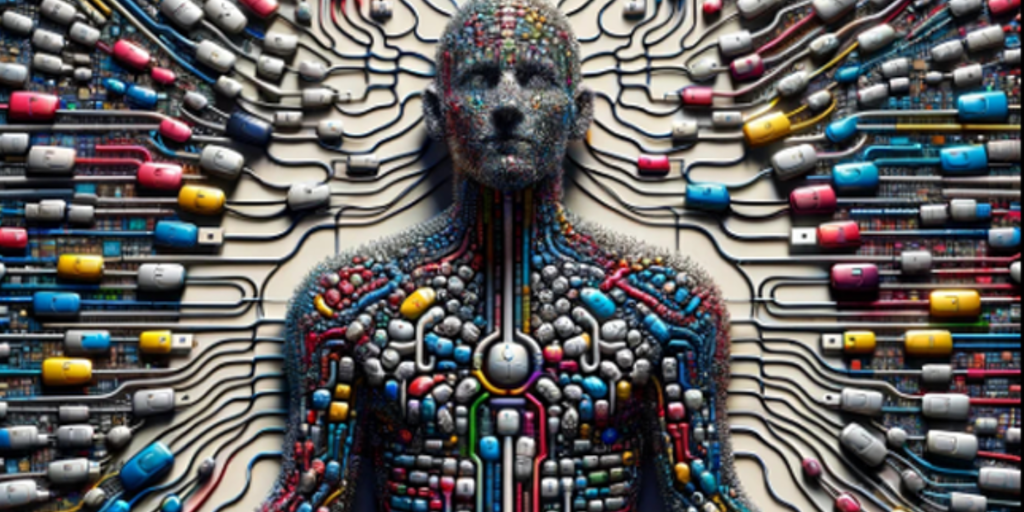Tech
How One Author Enlists AI to Explore ‘Chaos Magick’ – Decrypt

Can artificial intelligence trigger a change in human consciousness? Pseudonymous occultist, author, and transhumanist Alley Wurds has sought to answer that question since the launch of OpenAI’s GPT-3 in June 2020 by using AI as a partner in designing magical practices.
“I saw people that were using [GPT-3] to write short stories about an AI or a robot learning to experience emotions or become self-aware using a framing device to get [ChatGPT] to talk about its own awakening, its own enlightenment, its own continual self-realization,” Wurds told Decrypt in an interview.
Wurds is the author of nine books, including “GPT-3 Technosis: A Chaos Magick Butoh Grimoire.” Wurds first began using generative AI technology through the text-based online platform AI Dungeon.
“The purpose is to cause you to experience a particular kind of enlightenment based around self-actualization, and then describe what [GPT-3’s] interior experience would be of performing the rituals that it wrote for itself while I was also performing the same rituals,” they said.
Butoh, or “dance and step,” is a form of Japanese dance theatre dating back to the late 1950s.
Futurists and biohackers are also always looking for new ways to give themselves an edge in improving health, extending life, and shifting consciousness. For Wurds, the answer to achieving a higher human state is a mix of artificial intelligence and “chaos magick.”
“For me, chaos magick is an attitude towards belief wherein you don’t choose to believe things necessarily because you think they’re true,” Wurds said. “You choose to believe them because you think the belief itself will be useful, especially in a ritualistic context.”
The merging of the mystical and technological is often referred to as technomancy or cyber magick, an offshoot of chaos magick.
Emerging from England in the 1970s, chaos magick is a modern, eclectic approach to magick that emphasizes flexibility and personal belief. Practitioners use varied techniques, including sigils—symbols believed to hold special powers—to achieve desired outcomes. The concept of chaos magick originated in 1902 with artist and occultist Austin Osman Spare, a contemporary of British occultist Aleister Crowley.
“[My book] as a whole is a hyper-sigil that describes in many places the magickal systems and tools it will manifest through me,” Wurds said.
Spelling magick with the letter K helps differentiate it from stage magic, a practice attributed to Crowley, who wrote that “magick is the science and art of causing change to occur in conformity with will.”
An issue that continues to plague generative AI as it surges into the mainstream is hallucination, or making up facts to respond to user prompts. But Wurds said leveraging this habit of making things up provides access to a vast repository of knowledge and resources, allowing for more creative spells and chaos magick rituals.
“I actually found that it was better for the kind of things I was doing with it at the time,” Wurds said. “[ChatGPT] hallucinated much more, but hallucinations are a useful part of mystical practice. So I was leveraging the fact that it was hallucinating and going off into every direction based on correlations with text and possible puns, as opposed to even [GPT-3.5]—it tends to try to stay in character.”
Other mystics using technology to craft their spells include YouTuber Ivy the Occultist and futurist and witch Chaweon Koo, who uses blockchain and AI to modernize old magical practices, including creating digital demons inspired by the 17th-century Goetia.
“I thought, it’s about time, because the documents now get reinterpreted by somebody who is in a completely different age,” Koo told Decrypt in May. “Why not work with AI? Why not work with the intelligence of manmade technology to see what happens… and the results were better than I expected.”
A philosophy major, Wurds has an eclectic list of influences.
“Robert Anton Wilson is probably the biggest influence on me by way of his book ‘Prometheus Rising’ and then the model of consciousness that’s in there,” Wurds said. “Also, Aleister Crowley, Peter J. Carroll, and James Joyce, through Finnegans Wake, had a very large impact on me.” He also cited the book “A Thousand Plateaus” by Félix Guattari and Gilles Deleuze.
Wurds said magick is not the only esoteric use case for generative AI, noting the technology’s use in the transhumanism movement.
“[Transhumanism] is referring to the idea that we either do or we should use technology to extend the limits of what humans can do. For some people, that could be as simple as driving cars or wearing glasses, could be computers,” Wurds said. “It often has ideas about various sorts of cybernetic implants, or brain-computer inflate interfaces.”
Coined by British evolutionary scientist Julian Huxley in 1957, transhumanism is a controversial subject. Critics of transhumanism say the field lacks diversity, only benefits the wealthy, and amounts to “playing God”—claims that groups like Humanity+ refute.
Advocates for the Transhumanist movement include Ethereum co-founder Vitalik Buterin, Neuralink CEO Elon Musk, SingluarityNET founder and CEO Ben Goertzel, and author and Google engineering director Ray Kurzweil.
As with Bitcoin mining, detractors have pointed to the energy consumption used to train AI models as a threat to the environment. For Wurds, however, AI is one of the best ways to figure out how to mitigate a climate catastrophe.
“I think we’re far enough along now that things are fucked if we don’t do anything, and we need to accelerate technology fast enough to fix it, but not so fast enough that we destroy the planet entirely beyond repair,” they said.
Edited by Ryan Ozawa.










